Nestling in the pristine mountainous interior of Honshu’s northernmost region is the magnificent Towada-Hachimantai National Park.
The entire park offers extensive breathtaking displays of autumn leaves, but there’s plenty to keep you active throughout the year.
A haven for hikers, skiers, walkers and cyclists, and designated a Special Place of Scenic Beauty, this 854km² (330m²) region spans an area across the three prefectures, Iwate, Akita and Aomori, at the northern tip of Honshu.
For anyone seeking adventure in some of Japan’s most stunning interior landscapes, Towada-Hachimantai National Park makes for the perfect off-the-beaten-path destination that's accessible from Tokyo and beyond in a few hours by shinkansen and then local transport.
Download a PDF of this Guide:
Towada-Hachimantai National Park:
Gateway To Adventure In Northern Tohoku
by Rob Dyer
Found in the Northern Tohoku region of Honshu, Towada-Hachimantai National Park has a wealth of attractive forests, mountains, hiking trails and rustic hot springs, and is one of Japan's best spots for viewing the spectacular autumn colours during the month of October.
The park is made up of two separate areas: the northern area around Lake Towada and Mount Hakkōda, and the southern Hachimantai area.
The Towada-Hakkōda area encompasses Lake Towada, Mount Hakkōda, and most of the Oirase River valley. The Hachimantai area includes Mount Hachimantai, Mount Iwate, Tamagawa Onsen, and Akita Komagatake.
VIDEO: Towada-Hachimantai National Park 4K
The two areas are located around 50 kilometres apart from each other, both offering an array of outdoor activities spanning all four seasons. Skiing, snowboarding, hiking, cycling, canoeing and onsen bathing and a lot more can all be enjoyed here.
There’s potentially a lot to choose from. So to help get you started I’ve put together a few highlights of the Towada-Hachimantai National Park to spark your imagination and to inspire your own travel planning.
If you plot each of these destinations out on map, there is a general south to north course. You could use this as a loose itinerary, picking and mixing from these suggestions, adding other destinations as you wish.
SEE ALSO: Hachimantai: Northern Tohoku’s Next Must-See Destination?
Nyuto Onsen Village (乳頭温泉郷)
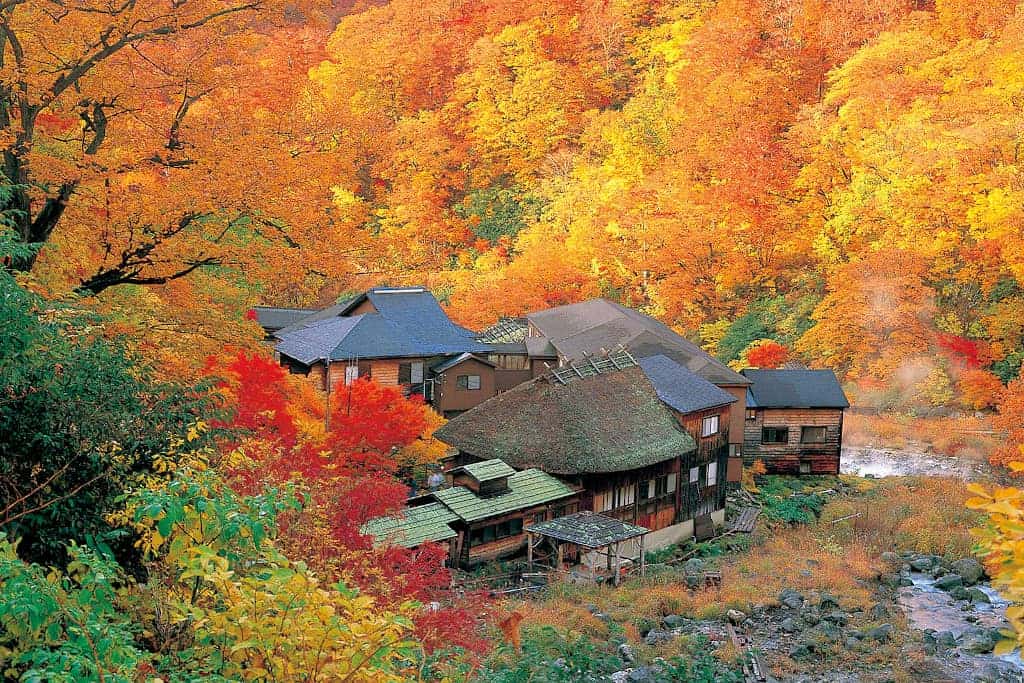
The rustic Nyuto Onsen Village is one of Japan's finest onsen dating back 350 years, and an unforgettable experience
If it's authentic and rustic style onsen you seek, then I can personally guarantee that a stay at the spectacular Nyuto Onsen Village is one of the finest onsen experiences available anywhere in Japan.
This remote village sits in the middle of a beech forest and is made up of seven separate hot springs dating back more than 350 years. And not much has changed in all those years.
What’s so appealing about Nyuto is that, once you enter it is easy to imagine what this place looked like all those years ago. Precisely because it has barely changed.
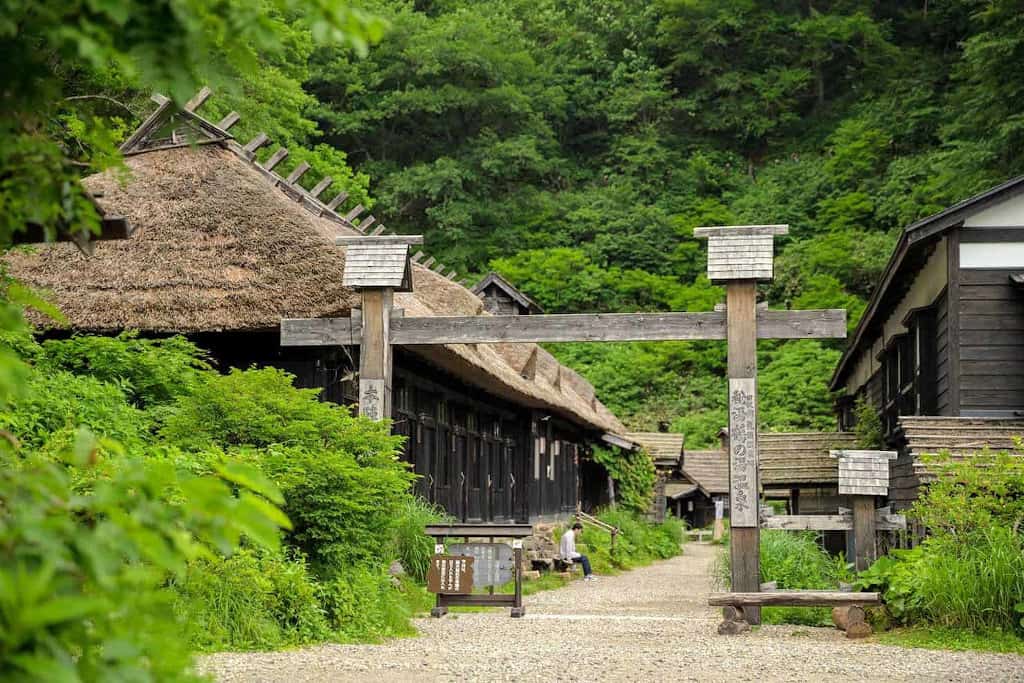
Tsuru-no-yu onsen is perhaps the most stunning of the seven baths in Nyuto Onsen Village
Of the seven onsen it’s Tsuru-no-yu that offers the most exceptional experience and although they have modern options, I recommend booking a traditional room - complete with irori cut into the floor of your room, above which you hang your iron pot to make your ocha, and where dinner is served to you.
It’s also one of the few places still offering mixed sex bathing, but the milky white water bath does provide some privacy screening.
Tsuru-no-yu is one of the 40 best ryokan and onsen included in the excellent guide Japanese Inns and Hot Springs published by Tuttle. I recommend staying here in winter when the surrounding mountain is almost cut off by the deep annual snowfall.
Properties in the Nyuto Onsen Village can be booked via the Japanese Guest Houses website.
Matsukawa Onsen area

The Matsukawa Onsen area is located between Mt. Hachimantai and Mt. Iwate
If Nyuto Onsen is a bit pricey for you, or you (like me) simply cannot get enough onsen, then not far is the Matsukawa Onsen area. It's located in a valley between two mountains: Mt. Hachimantai to the north and Mt. Iwate to the south. The area offers all year round activities, with mountain bike tours providing both exercise and an invigorating way to explore the wild landscape.
At the heart of the valley lies Matsukawa Onsen, a handful of onsen dotted along the Matsukawa River, fed by the local sulphurous and slightly cloudy hot spring water.
Pro Tip: If your time is limited and you cannot stay overnight here, all indoor and open-air onsen are also accessible to non-staying guests during the day for a small fee.
The Shofuso onsen opened in 1743 and is said to have the longest history in Matsukawa Onsen. The clouded white hot spring water in its Matsukawa Fuso onsen is rich in sulphur and is sought-out by fans of hidden hot springs many of whom make the most of their healing qualities after a day hiking.
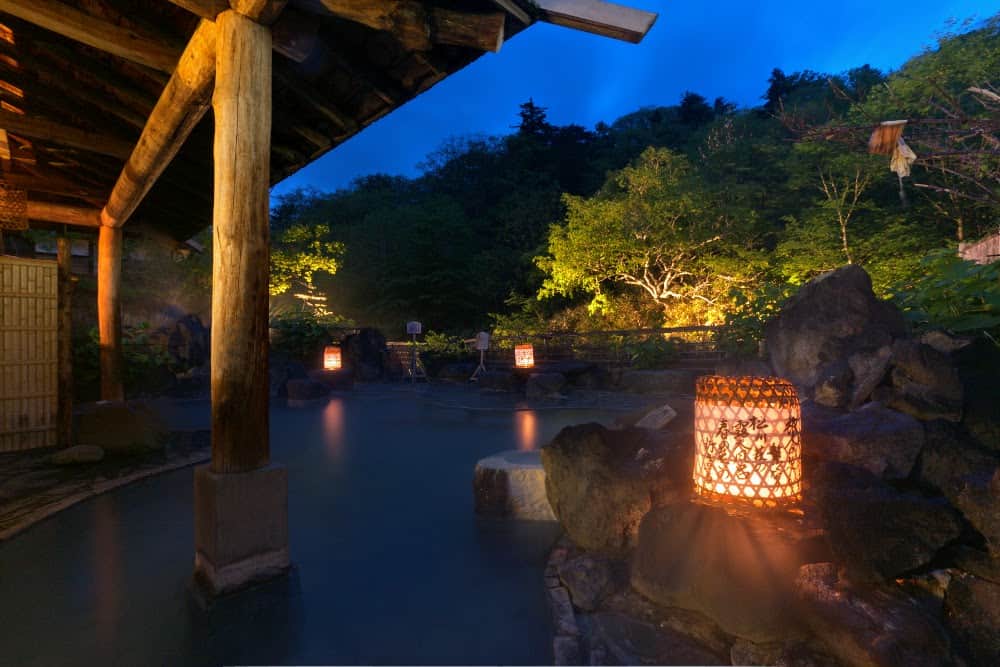
Dotted along the Matsukawa River are a handful of natural sulpher hot springs called Matsukawa Onsen
Although the spring waters are natural the village was purposely man-made. A copper mine flourished here in the 1950’s/60’s, with the population reaching 15,000 people at its peak in the village of Matsuo located in the Ōu Mountain. (The mine opened in 1914 and closed in 1979, leaving behind a ghost town still visible today.)
But when the industry collapsed, local officials had to find another source of income for the region and thought of developing onsen for tourism, away from Matsuo, and moved to this area to begin their search.
Using drilling equipment left over from the copper mines, they dug to find natural springs. Seven years later they finally hit an onsen that gave birth to the Matsukawa Onsen Area.
To provide the electricity to power the newly made onsen, locals took advantage of the powerful steam vents, creating Japan’s first ever Geothermal Powerplant in the 1960’s, and which still operates today.
Geocolor, the world’s only geothermal dyeing studio is also based here, creating handmade multicoloured textile-based gifts, each uniquely coloured. With the help of the family who invented this process, you can try the technique and make your own unique souvenir.
EXPERIENCE: Dye Your Own Scarf With Geothermal Steam in Matsukawa Onsen
Kagami-numa ‘Dragon Eye’ pond (ドラゴンアイ 鏡沼)

The spectacular natural phenomenon of Kagami-numa - 'Dragon Eye' pond on Mt. Hachimantai
On the slopes of Mount Hachimantai the fields of alpine flowers and the native Maries' fir forests combine with the mountain’s numerous volcanic lakes and ponds, creating magnificent vistas that any nature lover will want to visit.
Among those ponds, near the summit of Mt. Hachimantai, a rare and unique natural phenomenon can be found in the Kagami pond. Between late May to early/mid-June each year the pond takes on the remarkable appearance of a huge ‘dragon eye’.
This mysterious looking ‘eye’ is actually created when seasonal snow surrounding the pond melts into it, increasing the buoyancy of the centre before partly melting away. This leaves an emerald blue outer ring of water creating the impression of a huge creature’s eye.
The phenomena is fleeting so you’ll need to time your visit and it’s a good idea to check the local weather forecasts for the optimum opportunity to view this spectacular event. The rest of the year this landscape is well-suited to hikers with several routes crossing the mountain forests.
Accessible by car or by bus, the Hachimantai Summit Rest House is your starting point to the gate through which a 20-minute trail path will lead you to the Dragon Eye sighting.
You can read more about the Dragon Eye in my post Hachimantai: Northern Tohoku’s Next Must-See Destination?
Download a PDF of this Guide:
Lake Towada (十和田湖)

Formed by volcanic activity around 200,000 years ago, Lake Towada offers cruises throughout the year
Lake Towada is a caldera lake formed by volcanic activity that began around 200,000 years ago.
It‘s located approximately 15km due south of the Hakkōda Mountains, and on the border of Aomori and Akita prefectures, and is the biggest caldera lake in Honshu.
The area has a dramatic beauty in every season, with the great lake surrounded by rugged mountains and narrow valleys where small towns and villages nestle in the shadows of the peaks.
The name of the lake is believed to come from the Ainu word to watara , literally meaning "rocky lake".
Lake Towada Facts & Figures
200,000 Years Old
Estimated Age
327 metres (1,073 ft)
Depth
400 metres (1,800 ft)
Height Above Sea Level
46 km (29 miles)
Shore Length
61.1 km (37.96 miles)
Surface Area
12th Largest Lake in Japan
Ranking
The number one activity on Lake Towada is to take a leisurely cruise on the lake, as it is from the lake itself that some of the most spectacular views of this magnificent natural crater are to be seen, particularly in the autumn.
Trees surround the lake making it a remarkable spot to view the autumn leaves, or koyo, in October. The patchwork of reds, oranges, browns, yellows and greens are enhanced by the waterfalls and rivers that babble around the perimeter.
The source of the Oirase River (see below) begins at Nenokuchi village on the lake’s northeastern shoreline.
Oirase Gorge (奥入瀬渓流)
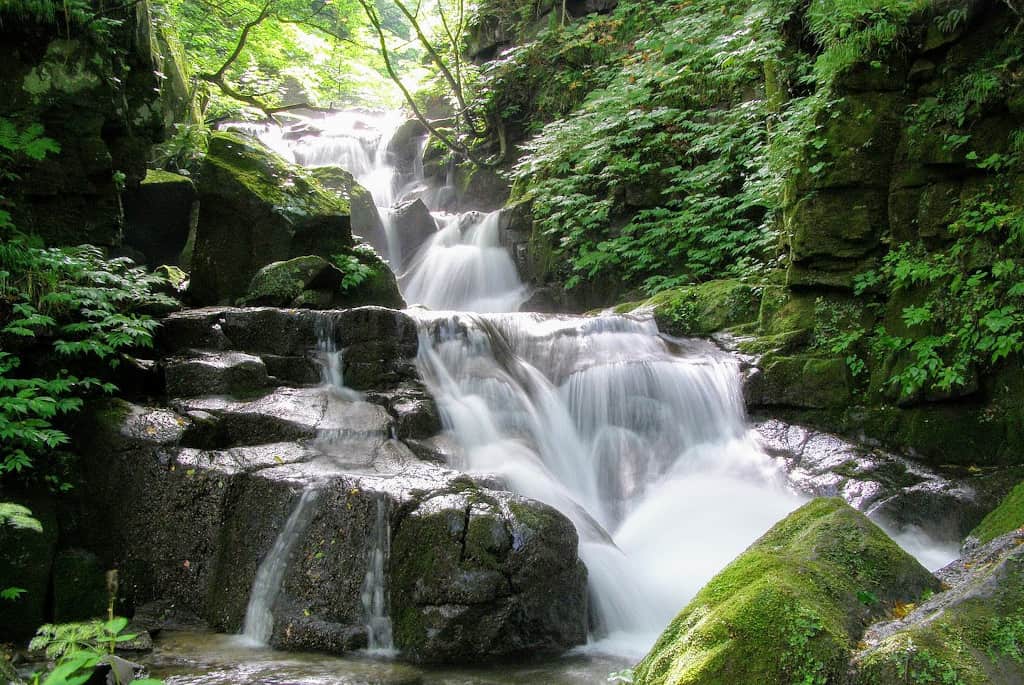
Many believe Oirase to be Japan’s most beautiful gorge | Photo: Toshinori Baba - Own work, CC BY-SA 3.0
Starting on the edge of Lake Towada at Nenokuchi village, the beautiful Oirase Gorge river valley runs 14km northeast to the onsen village of Yakeyama. It was carved out by and follows the course of the Oirase River (which eventually flows eastwards out to the Pacific Ocean).
Although not as well-known as its more famous counterpart Takachiho Gorge in Kyushu, many believe Oirase to be Japan’s most beautiful gorge.
VIDEO: Discover a Ghibli-like World at Oirase Stream
Its natural combination of multiple waterfalls and rapids that line the route, surrounded by an untouched vibrant green forest in the warmer months and illuminated frozen waterfalls in wintertime, makes it an idyllic walk through nature.
In 1996 Japan’s Ministry of the Environment selected the sound of flowing water at the Oirase River as one of the 100 Soundscapes of Japan.
Hakkōda Mountains (八甲田山)
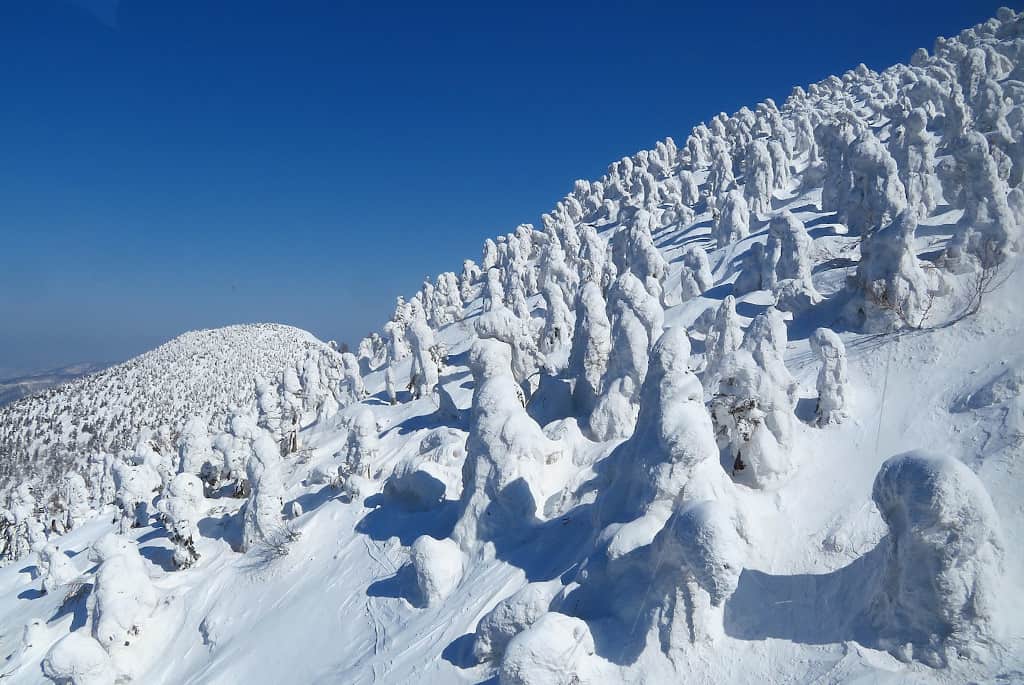
'Snow monsters' near Hakkōda's peaks | Photo: Marho - Own work, CC BY-SA 4.0
Roughly 15km southeast of Aomori City is the volcanic Hakkōda Mountain range. It’s a cluster of 19 peaks with 5 high-altitude wetlands. In wintertime the area offers its own version of the ‘snow monsters’ made famous by their more extensive counterparts on Zao Mountain in nearby Yamagata prefecture.
It’s also home to dozens of onsen making the most of the natural supply of mineral-filled, bubbling hot spring waters.
In the warmer seasons, local and international seasoned hikers are drawn here by the Hakkoda Mountains Loop. A 11.6km (7.2mile) trail taking a variety of terrain, offering an ever-changing display of nature at its finest. Many timing their visits to coincide with the gorgeous autumn leaves around October.
Conclusion
If it’s the chance to get away from it all, away from the crowds, back to immerse yourself in nature and all it has to offer, then an itinerary that takes in the Towada-Hachimantai National Park fits the bill perfectly.
Have any questions or experience of Towada-Hachimantai National Park you’d like to share, or just want to comment on this post? Please leave a comment below.
YOU MIGHT ALSO LIKE: Hachimantai: Northern Tohoku’s Next Must-See Destination?
How To Get To Towada-Hachimantai National Park
By Train:
To start at Nyuto Onsen, take the Akita shinkansen from Sendai Station on the JR Line to Tazawako Station (1hr 20min). Then take the Ugo Kotsu bus (in front of the station) to Nyuto Onsen (45min).
To start at Lake Towada or the Hakkōda Mountains, take the Tohoku shinkansen to Shin-Aomori Station (3hrs 10min from Tokyo). Then take the JR bus to Lake Towada (seasonal). Get off at Hakkoda Ropeway for the Hakkoda Mountains (1 hr 15 min). Get off at Lake Towada (2 hr 50 min).
For Hachimantai, take the Tohoku Shinkansen to Morioka Station. Seasonal buses run to the summit of Hachimantai.
If you're not already planning to use the Japan Rail Pass, then you might want to consider buying a JR East Pass for the Tohoku Area.
By Car:
If you plan on exploring the Northern Tohoku area generally, you can hire a car in Sendai from a provider like Klook. Otherwise, car hire is available at a more local level next to train stations. Note that many roads in the park, including the Hachimantai Aspite Line and National Route 341 in the Hachimantai area, are closed during the winter due to heavy snow fall.
By Air:
To get to the region by air, for the northern Towada area (suitable for Lake Towada, Hakkoda Mountains Ropeway, Oirase Gorge) fly to Aomori Airport, then take the airport bus to Aomori Station (35 min). The follow instructions above for By Train.
For the Hachimantai area, fly to Hanamaki Airport or Akita Airport. Buses connect Hanamaki Airport to Morioka Station (45 min) and Akita Airport to Akita Station (30 min). Take the Akita Shinkansen to Tazawako Station.
Deals on places to stay in Tohoku
Location Map: Towada-Hachimantai National Park

About the Author
A writer and publisher from England, Rob has been exploring Japan’s 6,800 islands since 2000. He specialises in travelling off the beaten track, whether on remote atolls or in the hidden streets of major cities. He’s the founder of TheRealJapan.com.
Resources
Download a PDF of this Guide:
Towada Visitor Centre
Open | 9:00 a.m. - 4:30 p.m. Open daily from late April to late May, and from late July to late October |
|---|---|
Closed | Wednesdays and from December 29 to 3 January |
Languages | Japanese + English and Chinese (exhibitions only) |
Address | 486 Towadakohan-Yasumiya, Okuse, Towada City, Aomori Prefecture |
Phone |
(+81) 0176-75-1015 |
Website |
Useful Websites
JNTO Guide to Towada-Hachimantai National Park
https://www.japan.travel/national-parks/parks/towada-hachimantai/
Official Towada-Hachimantai National Park government website
https://www.env.go.jp/en/nature/nps/park/towada/index.html
GoNorth Japan YouTube Channel
https://www.youtube.com/channel/UCk6dFlJNNJMljNg2-56piUw
Official Hachimantai Tourism
https://trip8.jp/wonder-off-the-beaten-path/
More Destination Resources
My List of Recommended Japan Travel Resources
The Real Japan Travel Store
Travel experiences in Tohoku (Rakuten Travel Experiences)
ALL ACTIVITIES in Towada-Hachimantai National Park
EXPERIENCE: Dye Your Own Scarf With Geothermal Steam in Matsukawa Onsen
EXPERIENCE: Try Kyudo Archery at a Temple in Noshiro, Akita
EXPERIENCE: Glamping and BBQ at the Tanesashi Natural Lawn in Aomori
EXPERIENCE: Michinoku Coastal Trail Hike With a Fisherman's Hotpot Lunch
EXPERIENCE: Experience Canoeing With Original Handcrafted Canoe in Akita
Northern Tohoku Travel Planning Services
Have some questions about exploring Northern Tohoku? Want help planning a Northern Tohoku itinerary? The Real Japan offers some services that you might like to take a look at.
My Travel Planning Calls are ideal if you have a few unanswered questions about a trip you are planning, or would like feedback and suggestions on an itinerary you are building. Learn More HERE.
If you'd rather hand over all the hard work for planning an entire trip then my Travel Planning Service is tailor-made for you. Learn More HERE.
Further Japan travel guides, books and checklists are available in The Real Japan Travel Store.
If you enjoyed this article please share this image online:

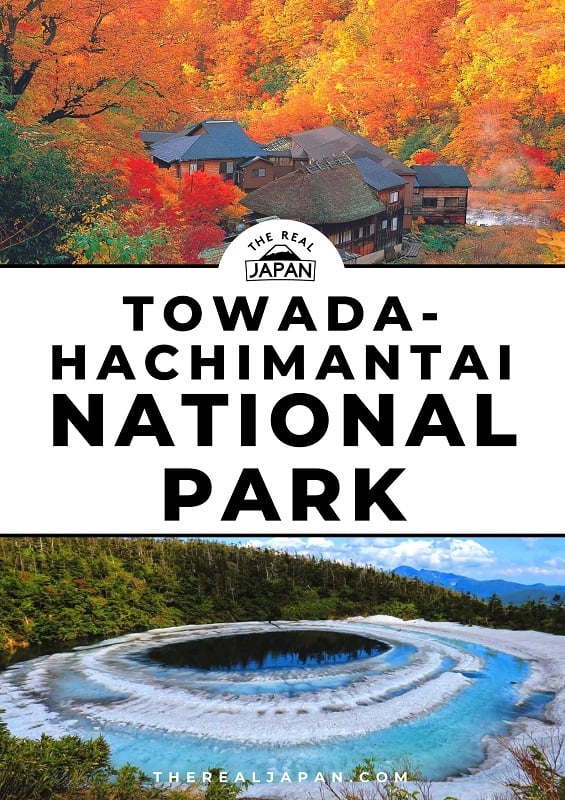

Although I am a frequent visitor to Tohoku (it is so easy from Tokyo) this article has highlighted some places I have not been to or not been for very many years, in particular the Towada area. Lots of good ideas!
As a rail fan, I also enjoy travelling on the many local lines in the Tohoku region that tend to be overlooked in the age of the Shinkansen, which offer a good way to see the scenery of and experience Tohoku.
Thanks for sharing your experiences Stephen.
Like you, I’m a fan of rail travel and especially getting off the shinkansen lines and onto the local line services. So much to explore on those – and so easy to do too – with a bit of forward thinking. And the Tohoku region definitely rewards exploration.
Glad my article highlighted some new destinations for you. Happy travels!